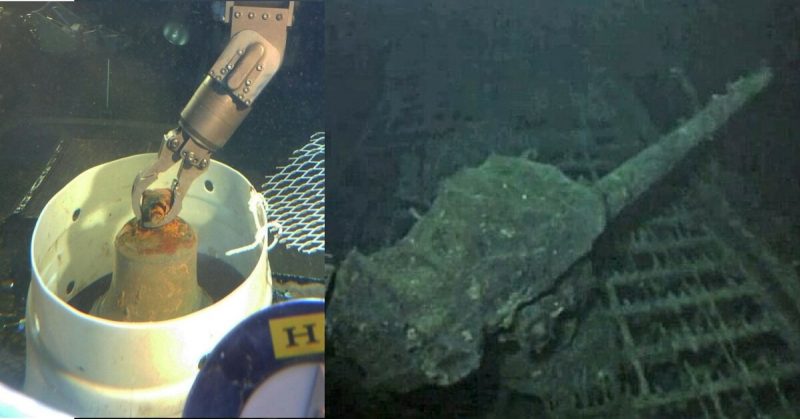A bronze bell that used to be aboard a Leviathan Japanese submarine during World War II has been successfully recovered from its 70-year-long resting place under the sea, off the coast of Oahu, Hawaii.
A dive team from the Hawaii Undersea Research Laboratory first discovered the I-400 in 2013 and has recently been able to send manned submersibles 2,300 feet below the surface to retrieve the bell using some robotic equipment. It required a great deal of effort, but it proved to be worth it.
The I-400 submarine was one of five Japanese subs that were taken to Hawaii once World War II had ended. The four other submarines were the I-14, I-201, I-203, and the I-401.
The I-400 was used as an aircraft carrier; according to the University of Hawaii, these models were the largest submarines of their time, until nuclear-powered submarines came along in the 1960’s. The submarine could launch one or two aircraft. The aircraft deployed in the submarine was an M6A1-Akhici.
The effectiveness of the submarine/aircraft carrier was never really tested in battle.
On May 31, 1946, with the Cold War just on the horizon, the U.S. Navy decided that it would prefer to sink the I-400 rather than hand over the technology to the Soviet Union, which had demanded that it receive all of the confiscated vessels from the war. The submarine’s technology could have benefited the Soviet submarine fleet. By, scuttling the submarine the Americans prevented this.
Two submersibles were used in the recovery of the bronze bell, the Pisces IV, and Pisces V, and the mission was a combined team effort between the University of Hawaii School of Ocean and Earth Science and Technology, California State University-Chico, Naval History and Heritage Command, and the USS Bowfin Submarine Museum.
A statement was released by the executive director of USS Bowfin Submarine Museum, Jerry Hofwolt, in which he explained what is to become of the retrieved bell:
“The recovery of the bronze bell from the I-400, and its eventual display at the USS Bowfin Submarine Museum gives us the chance to share this history with more than 300,000 annual visitors, many from the Pacific region. What was once an artifact on the seafloor will now be a national historic maritime treasure for all to see.”
The Hawaii Undersea Research Laboratory has so far found four of the five purposely sunken submarines. There may be much more of archaeological interest on these sunken vessels and they offer an insight into Japanese WWII naval technology.
